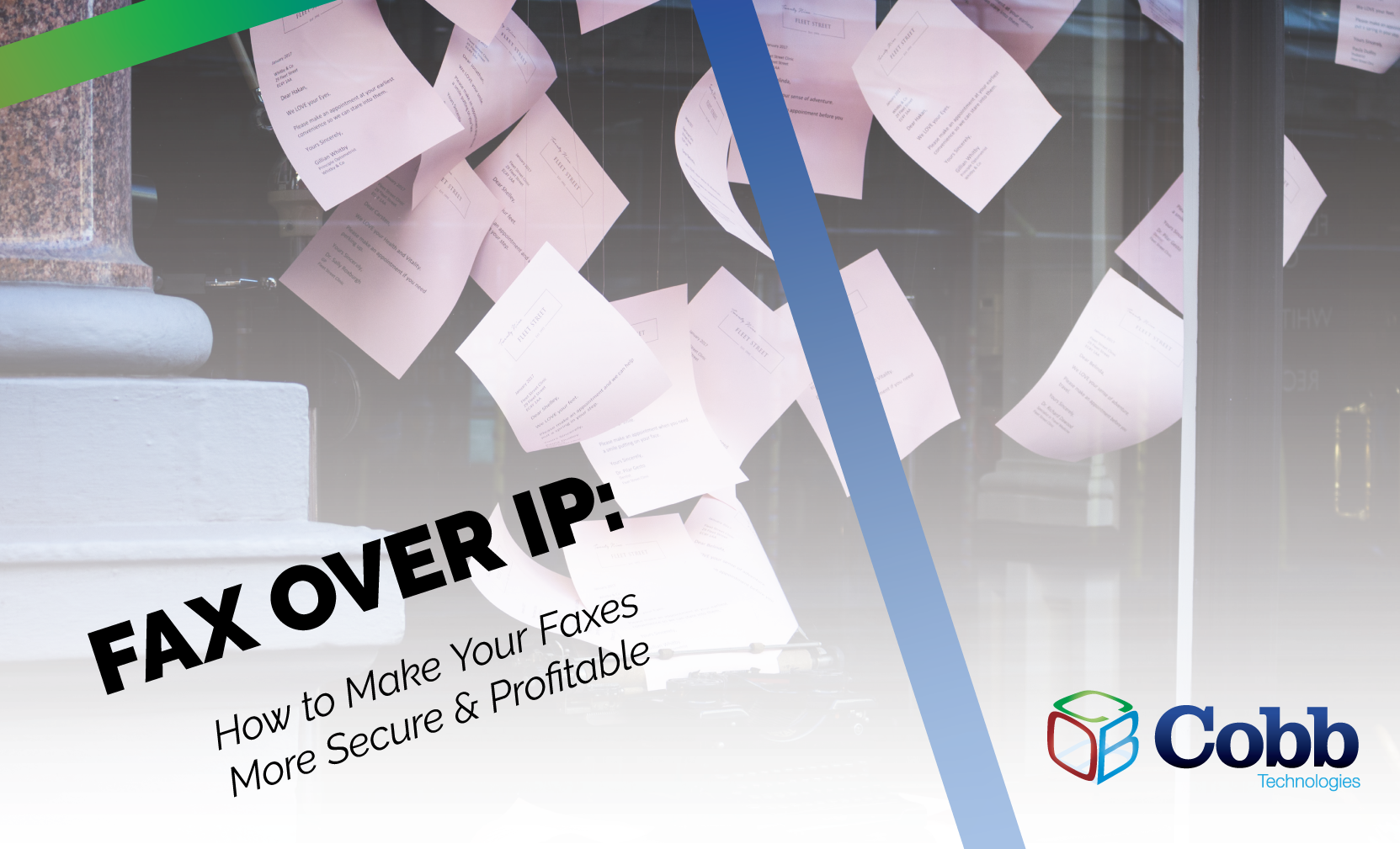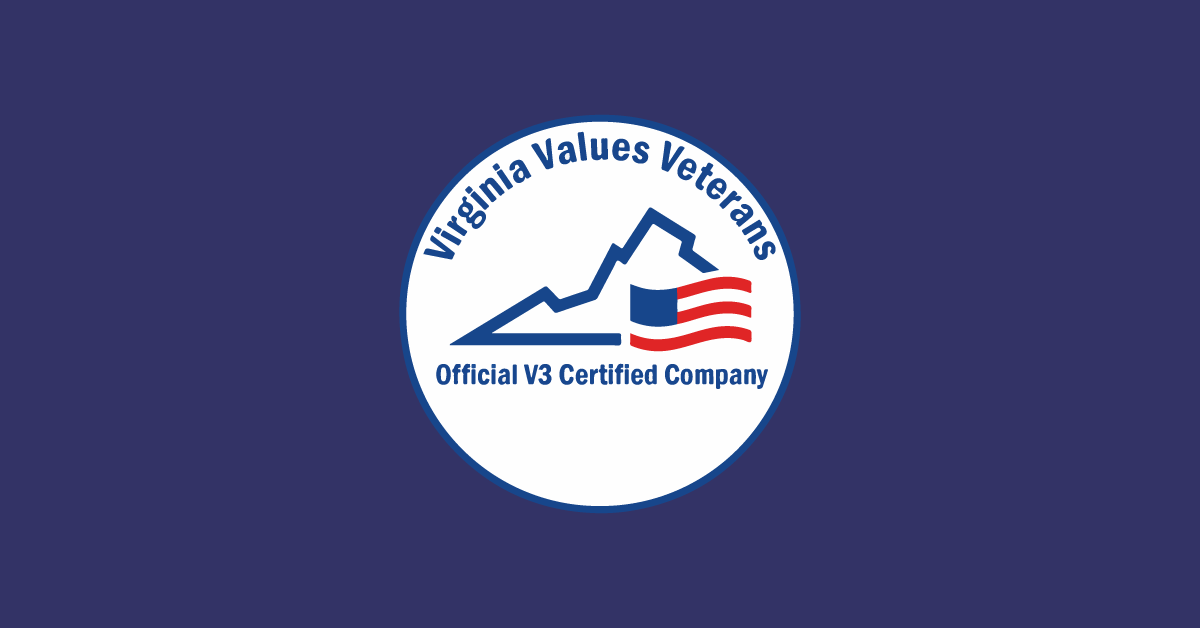3 min read
Building Culture That Works: Cobb Tech Named One of VA's Best
Cobb Technologies has been honored as one of the 2025 Best Places to Work in Virginia by Virginia Business and Best Companies Group. This prestigious...
3 min read
 Beth Johnson
Mar 25, 2022 12:12:08 PM
Beth Johnson
Mar 25, 2022 12:12:08 PM

Here’s a fun office riddle: when you send a fax, where does it go?
The answer, hopefully, is to the intended recipient. With a standard fax line, however, there’s no actual method for controlling who receives your fax. Even if you dialed the correct number on the keypad, there’s no way to ensure the person who it was intended for is the person to actually pick it up from their fax machine’s tray.
Essentially, sending a fax over a traditional fax line has all the security of a carrier pigeon: while in route, it’s very hard to intercept. If it arrives at its intended destination, document security is extremely lax. A carrier pigeon knows as much about who a document is for as your fax machine does: a whole lot of nothing.
Faxing, however, is necessary for heavily regulated industries that rely on confidential communications, simply because faxes aren’t stored in email servers, and can’t be doctored once they are sent.
If you’ve ever accidentally sent a fax to the wrong number, and found yourself thinking “there has to be a better way,” there is. And it’s Fax over IP.
While there’s a lot that goes on behind the scenes, Fax over IP essentially transforms your email client into a fax service. Yes, you read that right — you can send a fax, from your computer, using your email client, to another computer, using a email address as the intended destination.
All that you need is a scanner to scan the document, and a subscription to an e-fax service, like FaxCore or EtherFax.
To learn how to send a fax via Outlook completely free, read our blog, How Do I Send an Electronic Fax From Outlook?
Basically, whenever you send an email, that email is stored on your email client’s server, and is then packetized and sent over to the recipient’s email client server. Once the email has entered their server, they are notified that they have a new message waiting for them in their inbox.
This is the main reason why email is not allowed in heavily regulated industries that need to share confidential information. By storing the content of the email on not one, but two different servers, it’s very difficult to ensure that the document is secure — and the risk of someone viewing confidential documents rises dramatically.
Fax over IP does not store an email on the recipient’s server however. It is a completely secure method of digitally transferring confidential documents.
Imagine (and perhaps this is your exact situation) that you work in a medical office. For ease of use, your fax machine is at the reception desk, so you can quickly send and receive client paperwork. There’s a patient standing in front of the desk, and a fax begins to print out. They accidentally catch a glimpse of another patient’s medical information.
That is a HIPAA violation.
With Fax over IP, this problem is entirely solved. Faxes don’t print out when they are sent to your office — instead, they are stored in the specific recipient’s email inbox until they are ready to be read, meaning less opportunity for someone to peer over a sensitive document.
Fax over IP also ensures that when you send a document to another office or organization, that document only reaches the intended recipient. This will prevent any mistypes on the pin pad of your old fax machine, and also reduce the risk of your documents being viewed by someone else.
Lastly, because all of your faxes are stored in a secure server, you can never lose data, meaning even if a natural disaster strikes your office, you’ll still be able to access all of your securely-faxed documents.
Essentially, your faxes will always be more secure than traditional faxes because you have complete control over who can access, view, and interact with your faxes.
Possibly the most transformative aspect of Fax over IP is the fact that you can go completely paperless in your faxing operations. While you’ll need a scanner just in case you are presented with a physical document, you can simply attach a document straight from your computer to a direct fax message.
Think of how much paper a fax machine uses every month, and add in toner and ink, the fax line itself, and parts and repair on the copier that prints them. That’s a lot of supplies and infrastructure to simply send secure documents.
Using Fax over IP also saves your employees time, as they will no longer have to walk across the office to send or receive critical documents, or stand at the copier waiting for a document that should have arrived five minutes ago.
Essentially, Fax over IP cuts your supply costs, and increases your employees’ productivity levels, giving them more time to do their actual job, and not facilitate a fax machine.
If you’d like to learn more about how to implement and install a Fax over IP system at your office, reach out to us here.

3 min read
Cobb Technologies has been honored as one of the 2025 Best Places to Work in Virginia by Virginia Business and Best Companies Group. This prestigious...

5 min read
Cobb Technologies is honored to hold the SWaM (Small, Women-owned, and Minority-owned Business) certification, awarded by the Commonwealth of...

5 min read
Every year, thousands of Veterans transition from military service to civilian careers in Virginia, bringing invaluable skills and experiences to...